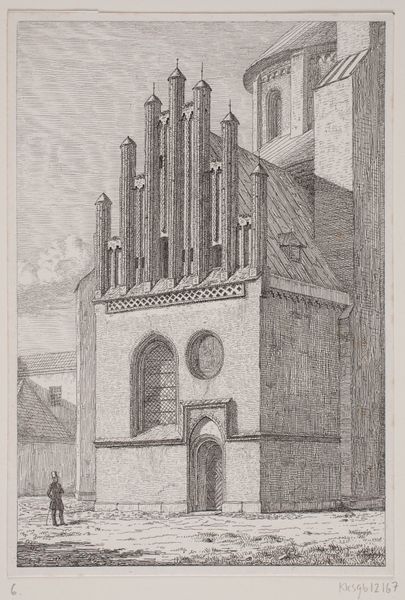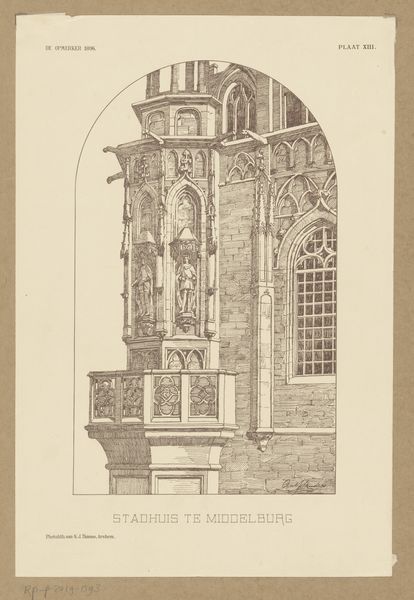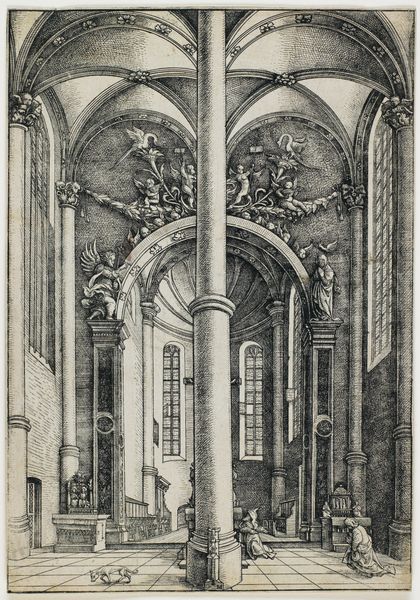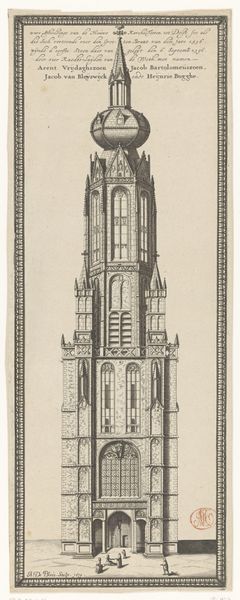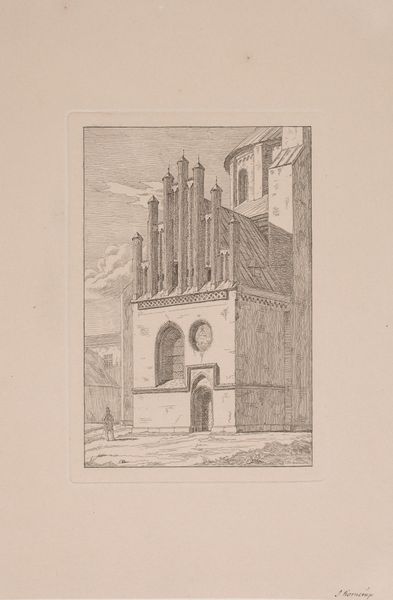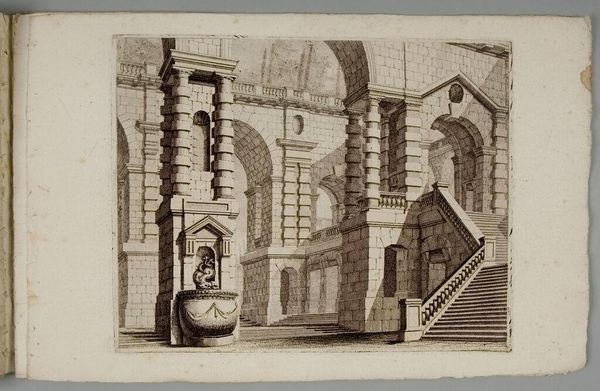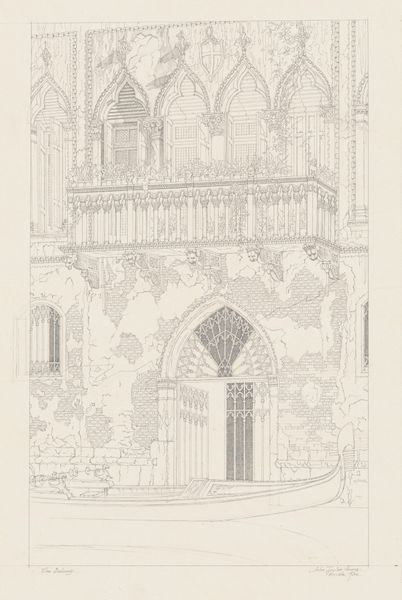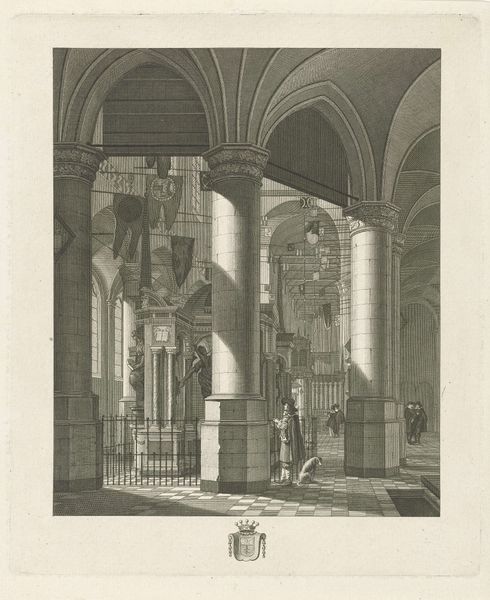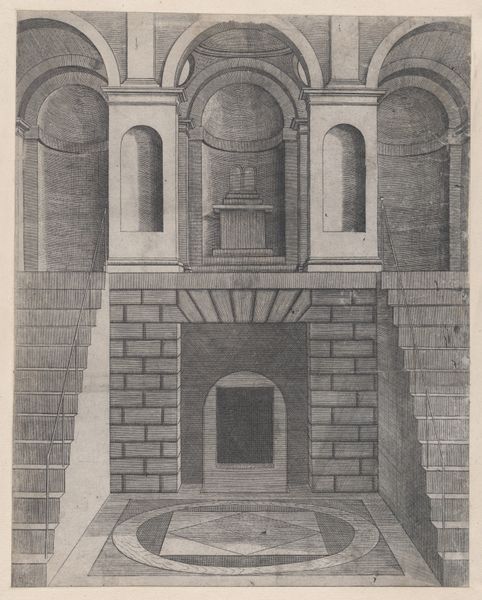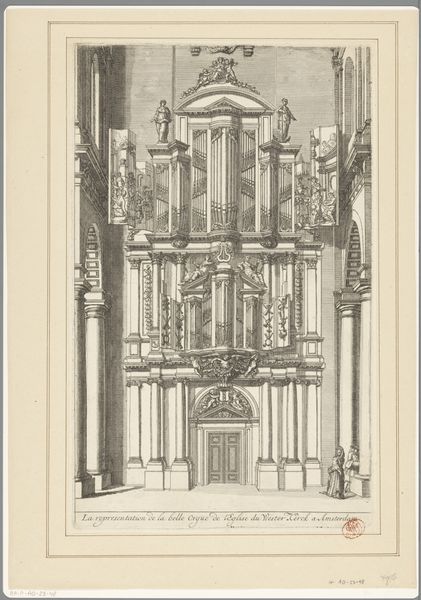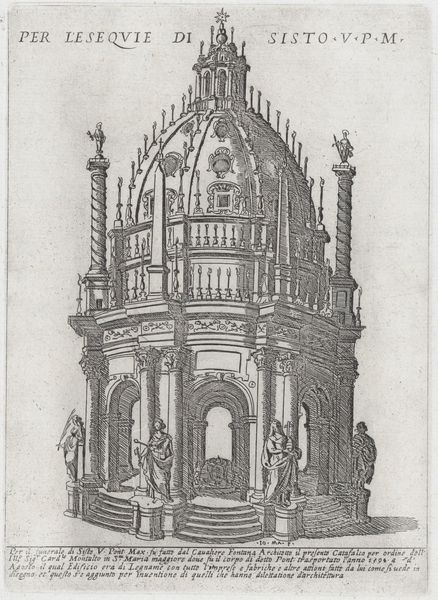
Oluf Mortensens Våbenhus, Roskilde Domkirke, set fra nord 1842 - 1900
0:00
0:00
drawing, print, etching, ink, engraving, architecture
#
drawing
# print
#
etching
#
etching
#
ink
#
cityscape
#
engraving
#
architecture
Dimensions: 357 mm (height) x 273 mm (width) (plademaal)
Editor: This is “Oluf Mortensens Våbenhus, Roskilde Domkirke, set fra nord,” dating from 1842-1900. It's an etching showing a detailed view of a cathedral armory. The precision of the architectural rendering is captivating, but I wonder about the meaning behind depicting this particular building? Curator: What stands out to me is the careful, almost reverential, depiction of this armory. Consider the historical context: 19th-century Europe was grappling with nationalism, industrialization, and rapid social change. The etching presents an interesting paradox of religion and violence. The architecture feels monumental but is also attached to violence via the “armory” depicted in the etching title. This piece asks how do cultural institutions play in constructing historical memory and, ultimately, shape power? Editor: That’s a really interesting point! I hadn’t considered the possible critique embedded in the image itself. Do you think the artist intended to convey this tension? Curator: Perhaps. Or maybe the artist sought to glorify it! Regardless, I believe the artwork encourages us to interrogate the role of institutions—religious, political, cultural—in perpetuating narratives of power. This Roskilde Cathedral wasn't simply a place of worship; it was a symbol of Danish identity. By focusing on the armory, the etching subtly questions the inherent contradictions within such symbols. Editor: So, it's less about the building itself and more about what it represents culturally and historically? Curator: Exactly. Think of the ongoing debates surrounding monuments and historical sites. This etching prefigures those discussions, forcing us to confront the legacies of violence and power that are often embedded within our most cherished cultural landmarks. What did you take away? Editor: I now see this etching as less of a historical document and more of a critical examination of how power, violence, and identity intertwine within cultural heritage.
Comments
No comments
Be the first to comment and join the conversation on the ultimate creative platform.
